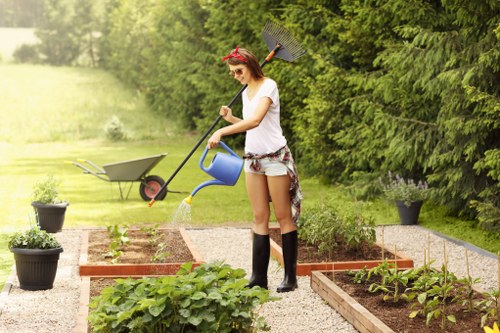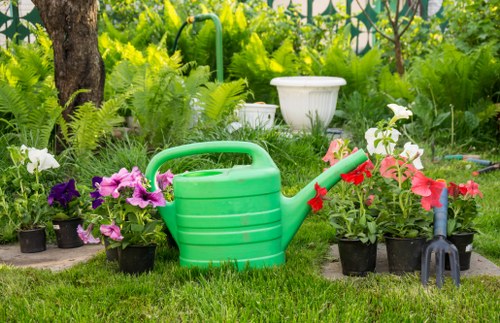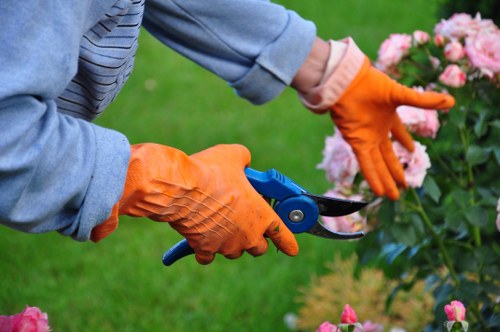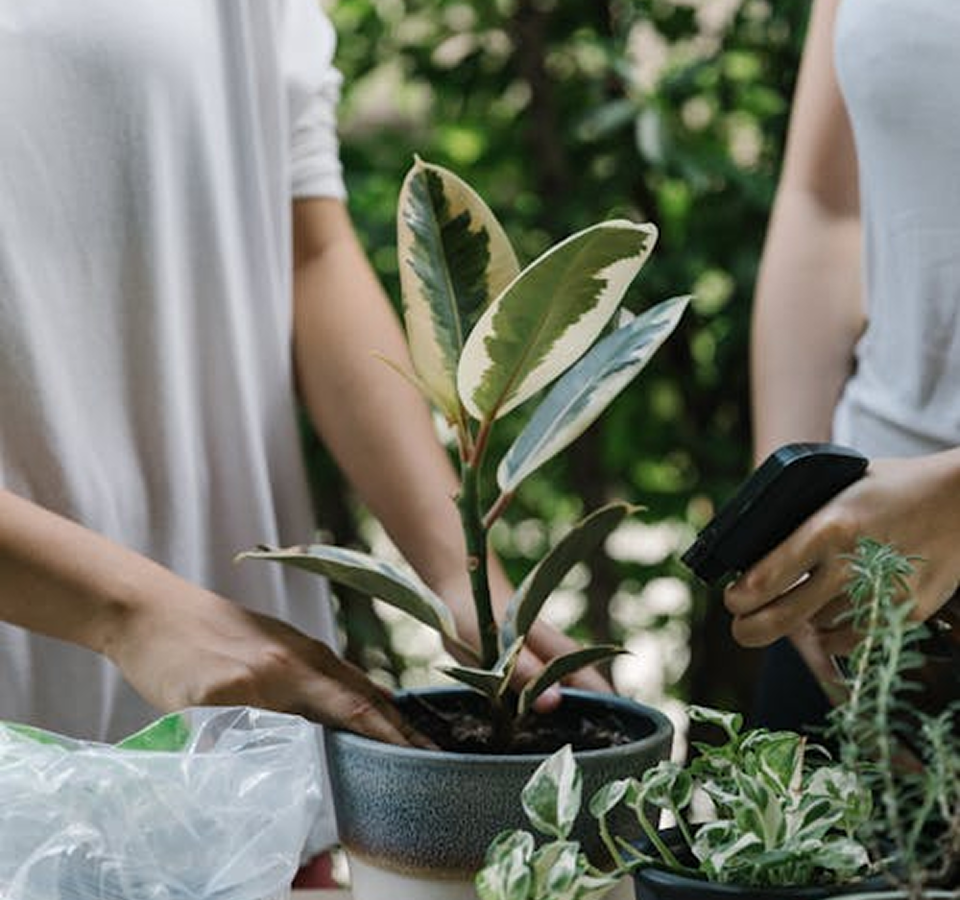Garden Maintenance in Turnham Green

Maintaining a beautiful garden in Turnham Green requires a blend of knowledge, dedication, and the right techniques. Whether you're a seasoned gardener or just starting out, understanding the unique aspects of garden upkeep in this area can make all the difference. The lush greenery and vibrant flowers that adorn Turnham Green are a testament to the effective maintenance practices employed by its residents and professionals alike.
Turnham Green's climate and soil conditions play a significant role in determining the types of plants that will thrive. With a moderate climate that experiences neither extreme cold nor excessive heat, gardeners have the flexibility to cultivate a wide variety of flora. The soil in this region is a mix of clay and loam, which affects water retention and root development for plants. Recognizing and adapting to these soil characteristics is fundamental for successful gardening.
Regular maintenance not only keeps your garden aesthetically pleasing but also ensures the health and longevity of your plants. From pruning to feeding, each task contributes to a vibrant and sustainable garden environment. Consistent upkeep prevents the growth of pests and diseases, encourages vigorous blooming, and maintains the structural integrity of plants. Moreover, a well-maintained garden can significantly enhance the overall value and appeal of your property.
Understanding the Climate and Soil of Turnham Green

The climate in Turnham Green is characterized by mild winters and warm summers, which allows for a diverse range of plants to grow effectively. This temperate climate supports both deciduous and evergreen plants, providing year-round interest in your garden. The balanced precipitation throughout the year ensures that plants receive adequate moisture without the extremes of prolonged droughts or floods.
The soil composition in Turnham Green varies, but it is generally a mix of clay and loam. Clay soils retain water well but can become compacted, leading to poor drainage and root suffocation. On the other hand, loam soils offer better drainage and aeration, promoting healthy root growth and plant development. Understanding your specific soil type is crucial in selecting the right plants and amendments to create an optimal growing environment.
To optimize soil health, it's recommended to perform a soil test to determine pH levels and nutrient content. Soil tests provide valuable insights into the presence of essential nutrients and any potential deficiencies. Based on the results, you can amend the soil with organic matter such as compost or well-rotted manure to improve structure and fertility. Additionally, incorporating mulch into your garden beds can help regulate soil temperature, retain moisture, and suppress weed growth.
Seasonal Considerations for Garden Maintenance
Different seasons bring unique challenges and opportunities for garden maintenance in Turnham Green. Adjusting your gardening practices to suit each season can lead to healthier plants and a more vibrant garden.
**Spring** is the time to focus on clearing out debris, pruning dormant branches, and preparing beds for new plantings. It's also ideal for sowing seeds and transplanting young plants into the garden. Early spring is the perfect time to rejuvenate your garden after the dormancy of winter, ensuring that your plants have a strong start as the growing season begins.
In **summer**, regular watering is essential, especially during dry spells. Mulching can help retain moisture and suppress weeds, reducing the need for frequent watering. It's also a good time to deadhead flowers to encourage more blooms and maintain the overall appearance of your garden. Additionally, providing shade or wind protection may be necessary for more delicate plants during the warmer months.
Autumn involves cleaning up fallen leaves, planting bulbs for next spring, and protecting delicate plants from the approaching cold. Fertilizing in the fall can provide essential nutrients for plant survival through the winter months, ensuring that they emerge healthy and robust in the following spring. It's also an opportune time to divide overgrown perennials and replenish garden beds with fresh soil amendments.
Winter garden maintenance includes safeguarding plants against frost, pruning where necessary, and planning for the upcoming growing season. Maintaining tools and equipment during this time ensures they're ready for spring. Additionally, installing protective covers or windbreaks can help minimize winter damage to sensitive plants, allowing them to recover quickly as temperatures rise.
Essential Garden Maintenance Practices

Effective garden maintenance involves a combination of routine tasks and periodic activities. Staying on top of these practices can significantly enhance the health and appearance of your garden. Consistency in maintenance ensures that small issues are addressed before they escalate, maintaining the overall balance and vitality of your garden ecosystem.
Pruning is a vital aspect of garden upkeep. It helps shape plants, removes dead or diseased branches, and promotes better air circulation. Regular pruning can lead to more robust growth and increased flowering, as it directs the plant's energy towards the healthier, more productive parts. Proper pruning techniques vary depending on the type of plant, so understanding the specific needs of each species is essential.
Weeding is another critical task. Weeds compete with your plants for nutrients, water, and light, often stunting their growth and vigor. By keeping your garden weed-free, you ensure that your desired plants have the best chance to thrive. Effective weeding involves not only removing visible weeds but also addressing their roots to prevent regrowth. Implementing a mulching strategy can also reduce weed proliferation by blocking sunlight and inhibiting weed seed germination.
Irrigation and Water Management
Proper watering practices are essential for maintaining a healthy garden. Both overwatering and underwatering can lead to plant stress and disease, undermining your garden's overall health and productivity.
**Drip irrigation systems** are an efficient way to deliver water directly to the plant roots, minimizing waste and reducing the risk of fungal diseases caused by excess moisture on foliage. This targeted approach ensures that each plant receives the appropriate amount of water, fostering consistent growth and reducing the overall water usage in your garden.
During dry periods, it's important to water deeply and less frequently to encourage deep root growth, which enhances plant resilience to drought conditions. Mulching around plants can help retain soil moisture and regulate temperature, creating a more stable environment for root development. Additionally, using rain barrels or other water-saving devices can further optimize water management and contribute to sustainable gardening practices.
Pest and Disease Control

Protecting your garden from pests and diseases is crucial for maintaining plant health. Early detection and integrated pest management strategies can prevent minor issues from becoming major problems, ensuring a thriving garden all year round.
Regularly inspect your plants for signs of pests such as aphids, slugs, and caterpillars. Early identification allows for prompt intervention before infestations spread. Utilizing natural predators like ladybugs or implementing organic pesticides can help manage infestations without harming beneficial insects or the environment.
Diseases like powdery mildew and root rot can be managed by ensuring proper air circulation and avoiding overwatering, which can create conducive conditions for fungal growth. Removing and disposing of affected plant parts can also help control the spread of disease, maintaining overall plant health. Additionally, selecting disease-resistant plant varieties can reduce the likelihood of severe outbreaks, simplifying garden maintenance efforts.
Soil Health and Fertilization
Maintaining soil health is fundamental to a thriving garden. Healthy soil supports strong root systems and provides essential nutrients to plants, fostering robust growth and resilience against pests and diseases.
**Composting** is an excellent way to recycle garden waste and enrich your soil organically. Compost improves soil structure, increases microbial activity, and enhances nutrient availability, promoting healthier and more productive plants. By incorporating compost into your garden beds, you facilitate better nutrient uptake and create a more favorable environment for beneficial soil organisms.
In addition to compost, using balanced fertilizers tailored to your soil's needs can provide a nutrient boost. It's important to follow recommended application rates to avoid over-fertilization, which can harm plants and the environment. Slow-release fertilizers are often preferable, as they provide a steady supply of nutrients over time, reducing the risk of nutrient runoff and promoting consistent plant growth.
Furthermore, practicing crop rotation and interplanting can help maintain soil fertility and reduce the buildup of soil-borne diseases. By diversifying the types of plants grown in each bed, you prevent the depletion of specific nutrients and discourage pest populations that target particular plant families.
Landscape Design and Plant Selection

Thoughtful landscape design and careful plant selection can transform your garden into a beautiful and functional outdoor space. Choosing plants that suit the local climate and soil conditions ensures a resilient garden that requires less maintenance and thrives in Turnham Green's environment.
In Turnham Green, native plants are a great choice as they are well-adapted to the local environment and require less maintenance compared to non-native species. Native plants also support local wildlife, providing habitats and food sources for pollinators, birds, and beneficial insects that contribute to a balanced garden ecosystem.
Incorporating a mix of perennials, annuals, shrubs, and trees can add variety and interest throughout the year. Perennials offer long-term structure and repeat blooming, while annuals provide vibrant color and seasonal flair. Integrating shrubs and trees adds depth, shade, and vertical interest, creating a layered and dynamic garden landscape.
Mulching and Ground Cover
Mulching is an essential practice in garden maintenance. It helps retain soil moisture, suppresses weeds, and regulates soil temperature, all of which contribute to a healthier and more sustainable garden environment.
Organic mulches, such as wood chips, straw, or compost, add nutrients to the soil as they decompose and improve soil structure. They also increase microbial activity, which enhances nutrient cycling and soil fertility. Applying a layer of mulch around your plants not only conserves moisture but also creates a clean and uniform appearance, reducing the need for frequent watering and weeding.
Alternatively, using ground cover plants can provide similar benefits by covering the soil, reducing erosion, and adding greenery to your garden beds. Ground covers like creeping thyme, vinca, or ivy can create a natural and aesthetically pleasing blanket that protects the soil and minimizes weed growth. Selecting the right ground cover plants depends on factors like sunlight, soil type, and desired appearance.
Tools and Equipment for Garden Maintenance

Having the right tools and equipment is vital for efficient garden maintenance. Investing in quality tools can make tasks easier and more enjoyable, allowing you to maintain your garden with greater ease and effectiveness.
Basic tools include gloves, pruners, garden forks, spades, and hand trowels. These essential items handle most of the day-to-day tasks, from planting and weeding to pruning and cultivating soil. Ergonomic designs and durable materials can enhance comfort and longevity, reducing the strain on your hands and wrists during extended gardening sessions.
For more extensive maintenance, consider items like an electric mower, hedge trimmer, and irrigation systems. Electric mowers are quieter and more environmentally friendly compared to their gas-powered counterparts, while hedge trimmers allow for precise shaping of shrubs and hedges. Automated irrigation systems, such as drip or sprinkler systems, can save time and ensure consistent watering, particularly beneficial for larger gardens.
Eco-Friendly Garden Practices
Adopting eco-friendly practices in your garden not only benefits the environment but also contributes to a healthier garden ecosystem. Sustainable gardening methods reduce your ecological footprint and promote biodiversity, creating a harmonious balance between your garden and the natural surroundings.
Implementing water-saving techniques like rainwater harvesting reduces reliance on tap water and conserves precious resources. Collecting rainwater in barrels or cisterns allows you to utilize natural precipitation for irrigation, minimizing water waste and lowering utility costs. Additionally, using greywater from household activities, such as laundry or dishwashing, can be repurposed for garden watering, provided it's free from harmful chemicals.
Using natural fertilizers and pest control methods minimizes the impact on local wildlife and ecosystems. Organic fertilizers, like compost and manure, enhance soil fertility without introducing harmful chemicals. Natural pest control involves encouraging beneficial insects, such as ladybugs and predatory beetles, which help manage pest populations naturally. Companion planting, where certain plants are grown together to repel pests or attract beneficial insects, is another effective eco-friendly strategy.
Encouraging biodiversity by planting a variety of species fosters a balanced ecosystem, attracting pollinators and beneficial insects that support plant health. Diverse plant life provides habitats for birds, bees, and other wildlife, contributing to the overall sustainability and resilience of your garden.
